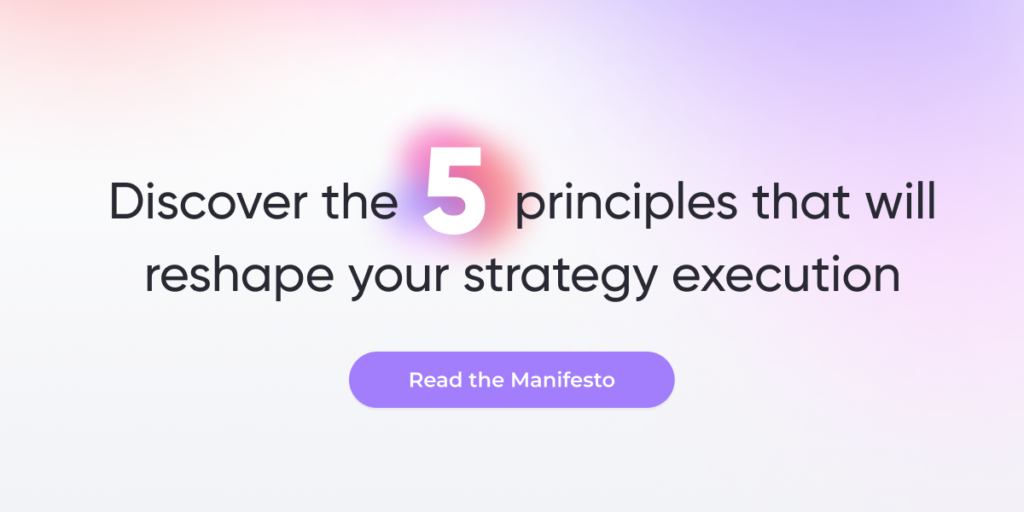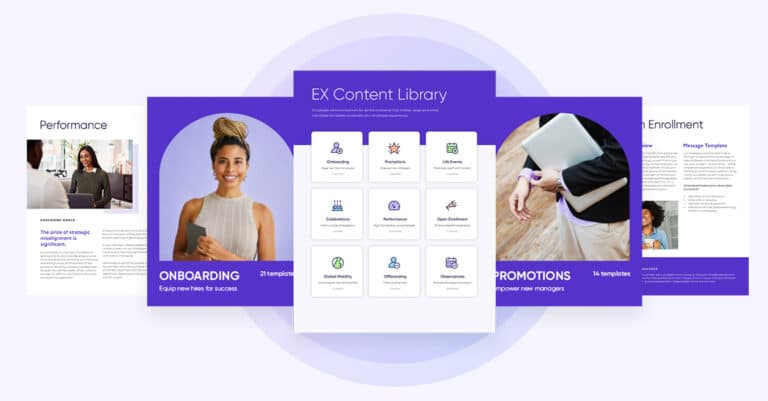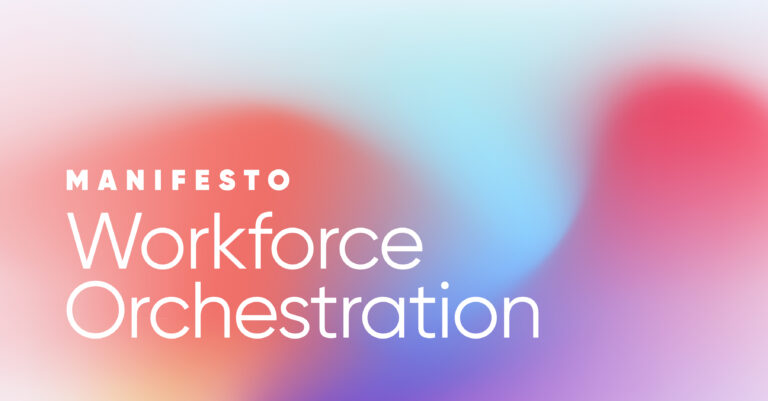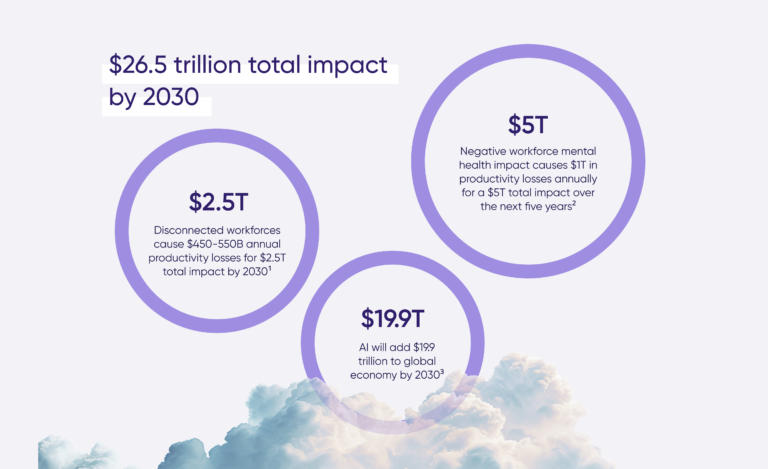It is common sense that communicating with your workforce would be good for business. However, the challenge for internal communicators and HR professionals is defining what success looks like for different types of internal communication campaigns and determining if these efforts truly impact employees’ lives.
While “success” can vary depending on the situation, there are strategies to ensure your internal communication efforts meet your organization’s goals, provide visibility into corporate initiatives, distribute vital information, and boost employee engagement.
By optimizing your internal communication strategy, studying real-time analytics, and using the proper communication channels to meet employees where they are, your organization will be better prepared to deliver positive outcomes.
This post will showcase internal communication examples, explore how campaigns are used, and highlight why internal communication is important in helping over 500 companies worldwide reach and engage employees daily through the Firstup intelligent communications platform.
The impact of effective internal communication campaigns
A successful internal communication strategy offers a significant business advantage. Employees become more informed, aligned with the company’s mission, and recognize their essential role in achieving goals.
An added bonus? They’re more likely to share the company’s story externally, becoming brand advocates.
Simply put, when a company is forthright and transparent about news—both good and bad—employees will respond positively. And let’s be clear: Today’s employees not only appreciate transparent communication, they expect it.
74% of employees reported feeling left out of company news because of ineffective or non-existent internal communication efforts.
This is why internal communication strategies and good internal communication have become central to fostering a great company culture. The use of digital internal communication tools has become widely recognized as a way to reach employees and have a measurable impact by:
Growing the business
Strong internal communication improves employee satisfaction, productivity, and innovation. When employees understand the company’s mission and how their efforts contribute to success, they are more motivated to help achieve it.
Reducing risk
Clear internal communication reduces risk in several ways. For example, when employees understand the correct safety procedures, they follow them, improving workplace safety and ensuring compliance.
During a crisis, effective communication is essential to keeping employees safe and informed.

Increasing brand and employee advocacy
When employees feel knowledgeable and excited about the business, they are more likely to become passionate advocates. They are eager to share the company’s story on social media and contribute to a positive company culture.
Reducing costs
Consolidating all internal communications into a single platform reduces operational and technology costs. Think of all the ways and places employees are asked to find information—a company intranet, email, and collaborative tools (Slack, Microsoft Teams, and so on).
It can be overwhelming, distracting, and ultimately self-defeating.
Streamlining information into one accessible place increases efficiency and saves money by reducing the number of systems in use.

Improving business agility
One of the most significant advantages of internal comms is increased business agility. With well-coordinated communication channels, companies can mobilize their entire workforce to respond quickly to changing business needs and company-wide announcements.
Perhaps the biggest reason why internal communication can have a profound impact is that companies gain a competitive advantage. They can mobilize all their employees to react quickly to meet changing market and business needs.
Creating authentic engagement
Engaging internal communication encourages two-way communication between employees and the company, creating a healthy work environment. When employees feel heard, they are more engaged in both the company’s culture and its success.

Elements of a successful internal communications campaign
Achieving success with your internal communication strategy requires more than just setting up a company intranet. It takes various components working together to deliver a great employee experience.
A well-executed internal communication plan can enhance employee morale, boost employee engagement, and align employees with the organization’s mission and vision.
Below are key elements of a successful internal communications campaign, all enabled by the Firstup intelligent communications platform. Firstup engages employees from hire to retirement, providing insights that help you support, promote, and retain your workforce.
Connected… everything
Firstup unifies employee communications on a single platform, with new and upcoming HCM connectors (including Workday, SAP Successfactors, Oracle HCM, and UKG), and more systems will be able to send notifications directly into Firstup.
Additionally, the new employee hub serves as a single access and action point for all critical employee tools and systems. Enhanced integration with Microsoft Teams ensures a seamless, in-app experience, eliminating the need to switch in and out of apps.
Research shows that 88% of new employees feel that organizations fail to effectively onboard them.
Firstup’s features are designed to eliminate unnecessary complexity, providing clearer communication and ensuring employees focus on what matters most.
Engaging and automated content
Firstup offers pre-built journeys and customizable brand features with a centralized asset library, making it easy to scale campaigns while eliminating complexity.
The platform also allows for automated campaign delivery using data-driven orchestration—tripling employee engagement while reducing digital noise.
Personalized communications
The Firstup platform connects all your systems, creating a Universal Employee Profile for each employee. Combining multiple data sources allows you to create rules using employee attributes, engagement data, followed groups, location, department, and more.
In addition, Audience Builder supports complex segmentation so you can ensure personalization to the right audience.
Firstup provides a seamless experience with content delivered to where your people are most likely to consume it.

Optimized delivery
Organizations can optimize the delivery of employee campaigns with the new Engagement Boost feature that intelligently predicts and orchestrates the optimal delivery channel and time, resulting in up to 3x increase in engagement results.
With new delivery connectors being added, teams can now deliver content into even more employee experience platforms such as (e.g. MS Viva Connections, ServiceNow, Workday People Experience, Oracle ME, SuccessFactors), and new real-time delivery reporting capabilities.
Real-time analytics
Experience analytics serve as an early warning for employee dissatisfaction, burnout, or a need for change in the business. Continuously updated delivery and engagement results ensure the next message is personalized and meaningful.
The Firstup communication pipeline connects your employee channels, reduces digital noise, and delivers data-driven insights.
Hyper-personalized comms for every employee
Effective internal communication examples
Internal communication done right pays off in spades across an entire enterprise.
Below, we take a look at several internal communication examples showcasing how companies use campaigns—including those with employee apps—to share information, engage employees, provide company updates, reduce costs, and implement company-wide change.

Let one (or more!) of these internal communication examples serve as inspiration for your own internal comms needs!
1. Internal communications example: Information comms
Southern Company Gas implemented the Firstup platform to ensure that employees had a consistent digital experience across all endpoints, including mobile and SharePoint.
This provided the entire team with improved access to relevant content and news through effective communication channels, leading to increased employee engagement.
Additionally, it positively impacted the company’s bottom line!
2. Internal communications example: Crisis comms
Centralizing internal communication and reaching frontline workers through their preferred channels is crucial for industries like healthcare.
During the COVID-19 pandemic, Providence used the Firstup Analyze dashboard to view unified analytics for messaging. Monitoring employee responses across different segments helped the company achieve company-wide alignment during the crisis.
3. Internal communications example: Culture comms
Booz Allen Hamilton, a consulting firm with 24,000-plus dispersed employees, felt disconnected from the home office.
Adding an internal communication platform accessible across multiple channels created real-time connections and enhanced engagement with employees, restoring the company’s culture and internal community.
4. Internal communications example: Reducing costs
Lincoln Financial modernized its internal communications with Firstup, reaching 100% of its workforce on their preferred channels. By aligning communications strategies around key business initiatives, Lincoln achieved significant time and cost savings.
Their internal comms team can publish twice as fast as they could before using Firstup, simplifying their communication stack for greater efficiency.
5. Internal communications example: Corporate change comms
Wawa, the East Coast convenience store chain with 33,000 employees, struggled to communicate with frontline workers across 800 locations.
By providing access to information through mobile devices and employee apps, Wawa dramatically improved response times to supply-chain issues and enabled employees to offer immediate feedback and voice concerns to senior management about job conditions.
Why is internal communication important to organizational success?
Effective and practical internal communication is vital to the success of any organization. It drives employee engagement, promotes a positive company culture, streamlines onboarding, enhances crisis communication, and strategically improves two-way communication between leadership, managers, and employees.
“Firstup was a way for us to include all of those employees, whether you sat at a desk in our corporate offices, or you’re on the floor servicing customers, or you’re part-time and might only work a couple of days a week, we were able to reach all of those employees with the same communication at the same time.”
— Michelle DiTondo, Avion Consulting, MGM Resorts
The Firstup intelligent communications platform delivers it all and more. As demonstrated in the internal communication examples, it’s a single platform to connect the employee experience, unlock real-time intelligence, and deliver personalized communications at scale.
Deliver a hyper-personalized employee experience at scale
FAQ
Internal communications is the communication between companies, leadership, and employees. It creates a shared understanding of company goals, values, and guidelines. Great internal communications make employees feel informed about the company’s latest initiatives, establishes authority and trust, and streamlines communication across departments.
An effective communications campaign is driven by its purpose. Goals must be clearly defined, audiences should be correctly targeted, messages need to resonate with recipients, and required actions or responses should be explicit.
A strategic communication campaign is a purposeful messaging effort designed by organizations to communicate with employees about policies, initiatives, products, and services, ensuring clear and targeted engagement.
Download PDF








